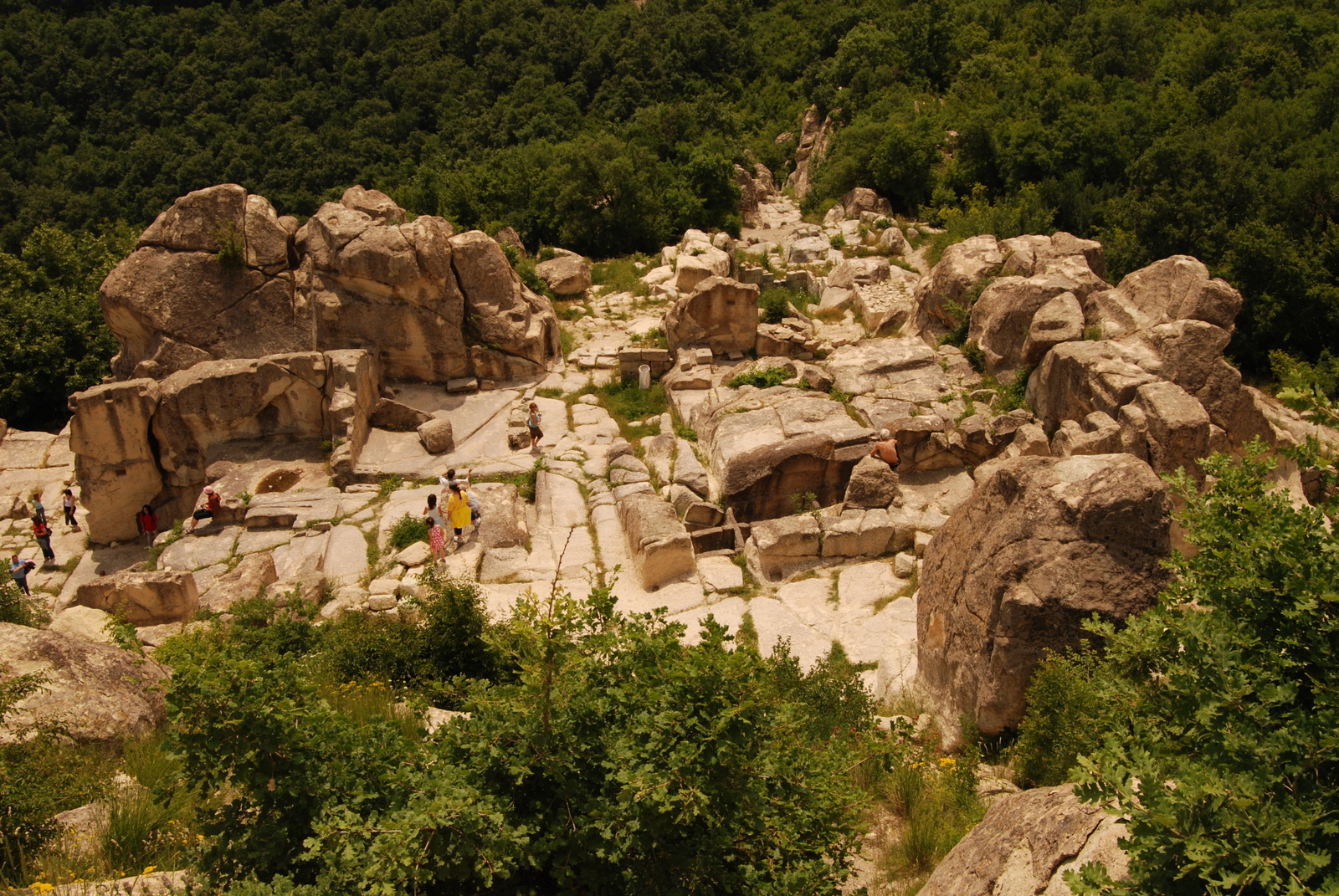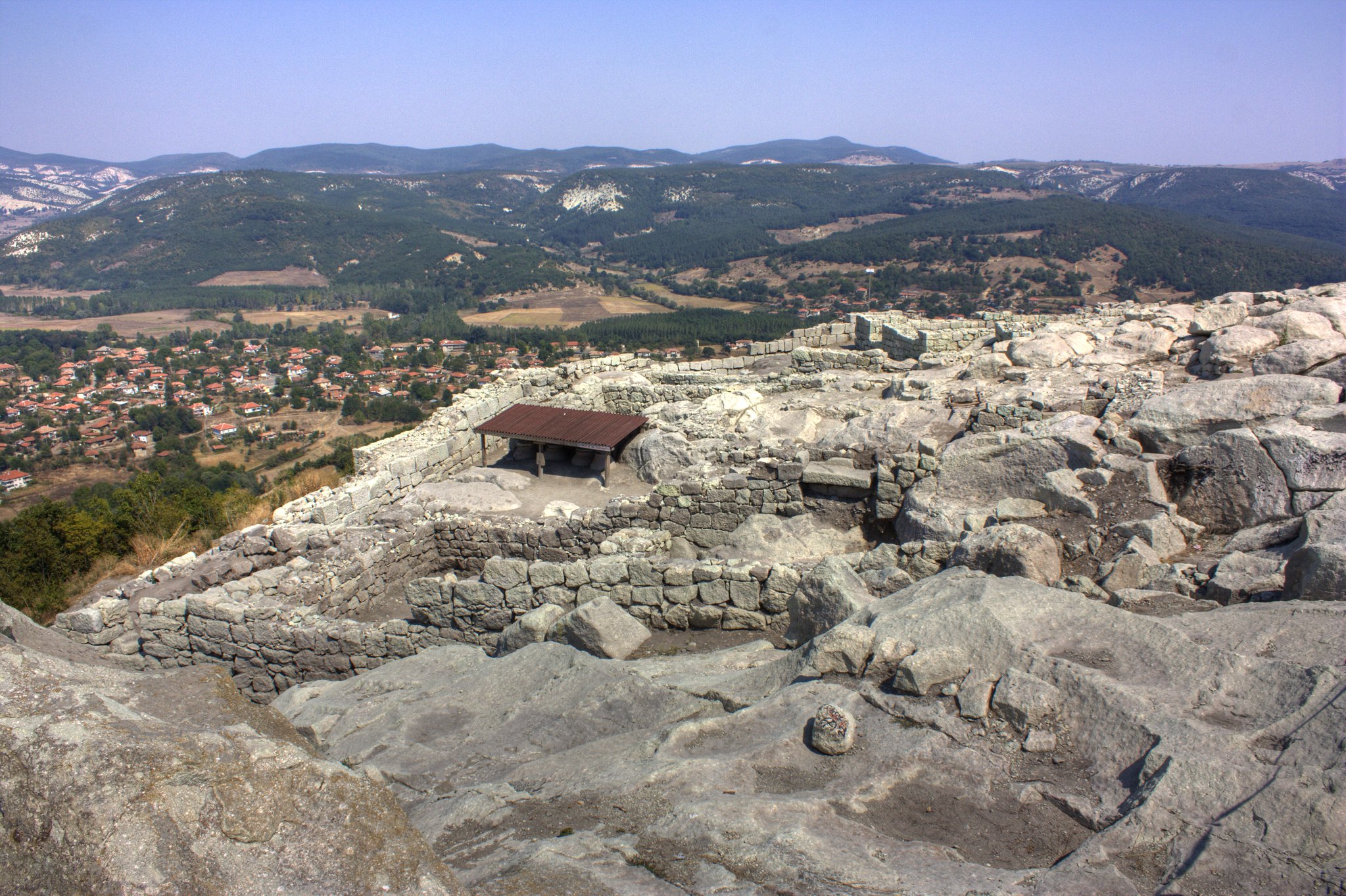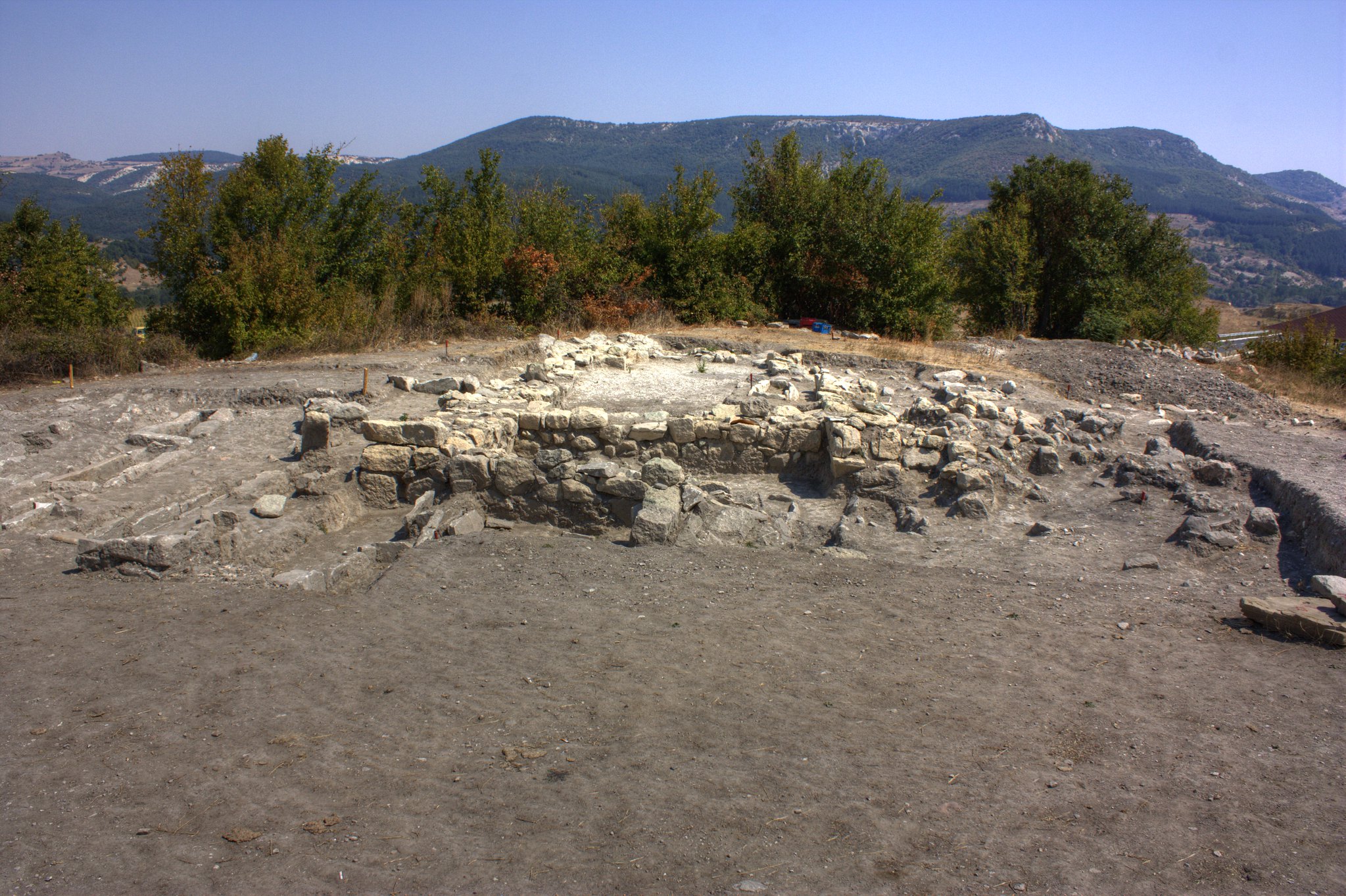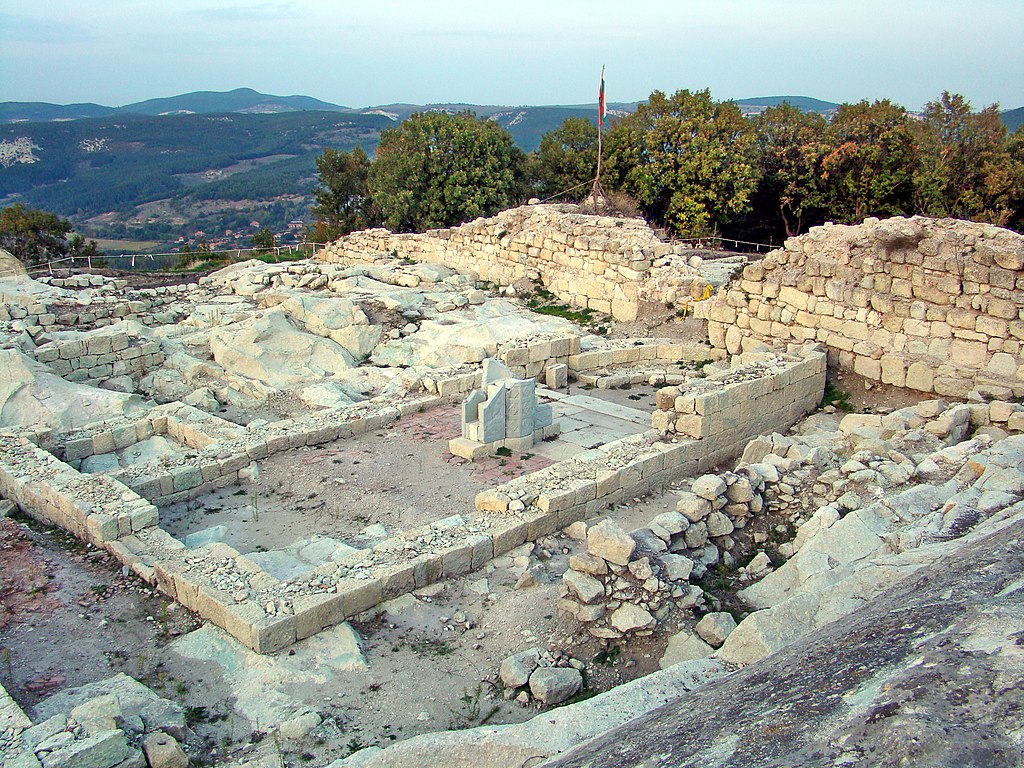
Perperikon, one of the oldest cities in the world, made of stone and only discovered in the 20th century in Bulgaria, shed light on one of the greatest and most mysterious civilizations on earth, the Thracians.
The Thracians resided partly in the northern regions of ancient Greece and had a notable influence on its culture. Perperikon was also inhabited by Neolithic Europeans as well as the Romans, Bulgarians, and Goths later on. It is thought to be home to a famous temple of Dionysus.
Perperikon, the name the city was given in the Middle Ages (11th-13th centuries), potentially originated from the ancient Greek word “hyperpyros,” meaning “altar-fire.” It is a multi-megalith city atop a 470 meter-high rocky hill in the Eastern Rhodopes near the present-day town of Kardzhali, Bulgaria. It originally served as a sacred, or religious site, but eventually developed through the ages to become a place of habitation, either as a complex of temples or a royal fort.

Perperikon is the largest megalith ensemble site in the Balkans and has a history of inhabitation running all the way back to 5,000 BC. The first traces of mature civilization can be traced to the Bronze Age era. Some ceramics from the site have been dated back to the Early Iron Age.
Finds from the Eneolithic (Copper Age) suggest regional cultures began creating ritual pits and crevices in the stones themselves, depositing ceramics and other pottery within the gaps.

A great deal of the excavated pottery shares artistic and structural similarities with the pottery fragments of the Karanovo Culture, one of the most important prehistoric peoples of the Balkans, of that same period.
However, it wasn’t until the Bronze Age that the site truly flourished, and some researchers have claimed that around the 18th to 12th centuries BC, the city of Perperikon was a major center. This era of development may be related to the so-called civilizational peak of the Minoans and Mycenaeans.
The most significant period in the history of the ancient citadel of Perperikon is in line with the Thracian and Greek cultural eras, with classical traces still visible at the site, including, potentially, the temple of Dionysus.
The citadel was the stage from which Medokos declared himself the king of Thrace in 242 BC after the death of Odrysian King Sitalces, but it was ultimately overthrown.
Generally speaking, the excavated site can be separated into four distinct areas, with the citadel, or acropolis, dominating the uppermost site on the hill. Immediately below is a palace and temple complex that faces the southeast, and the other two areas are filled by the outer cities, buildings that were likely constructed outside the fortified walls.
The foot of the hill plays host to the ruins of several villages, which points to a dense habitation, particularly during the Roman period. This area is where the least research and excavation has been carried out.

The most researched and best understood section of the Perperikon site is the large building located within the eastern part of the acropolis, a structure carved into the rock with a basilica plan. Excavation work has concluded this was the site of an important pagan temple, where a Christian church was later built, by the simple addition of an apse to the central altar.
Some researchers have theorized the Slavs may have once worshipped Perun, the god of the sky, thunder, and rain at this hill temple, arguing that this is how the name Perperikon, meaning “the place where the stone meets the sky,” stuck.
The Christian basilica is somewhat still intact, with large double doors documented, along with a portico which leads to the center of the acropolis and columns that once lined it.
Was Perperikon Home to the Temple of Dionysus?
However, the real mystery of Perperikon, and what keeps historians working towards the truth is the discovery of an open air structural base made of stone that corresponds perfectly to the temple of Dionysus of the Rhodope Mountains, mentioned by Greek classical authors.
The temple of Dionysus site is centered on a round altar, which is six feet in diameter. It rises around six-and-a-half-feet off the floor of the Perperikon complex.

Several of the oval-shaped holes carved around the altar, along with a square platform beside it, highlight a potentially ritualistic and ceremonial setting, and archaeologists have found lots more ancient altars around this area, all carved with troughs and basins.
The northern side of the site in particular features many altars, and the artistic reconstruction of the ancient citadel paints a picture of magnificence for those approaching the shrine of Perperikon. This has led many historians to claim it is the location of the ancient temple of Dionysus of the Rhodopes, which was visited by Octavian Augustus, as detailed by Gaius Suetonius Tranquillus in his work.
Confirmation, at least to some extent, of the pertinence of the Dionysian theory, comes from the excavation of several channels and circular indentations in the altars. It may be that these altars are just typical examples of those commonly used in blood sacrifices, as the Thracians were known to sacrifice animals, but, the network of carved channels and holes could also serve as working parts of a rough winepress, used to produce the sacred wine for ritual purposes.
This was a crucial element in the worship of Dionysus, the ancient Greek god of wine, winemaking, fertility, and ritual ecstasy. This further supports the hypothesis that Perperikon was the center of the regional cult of Dionysus.
See all the latest news from Greece and the world at Greekreporter.com. Contact our newsroom to report an update or send your story, photos and videos. Follow GR on Google News and subscribe here to our daily email!



